Day III: 10th September 2008.
Weather: Glorious sunshine at first, but overcast later in the morning
Low Rigg nr Walton to Burnhead: 14 miles (17.8 on Pedometer)
Total Steps: 37671
Acc Steps: 105940
Today’s destination was very topical as I had left my baseball hat at the B&B in Low Rigg, and wouldn’t you know it I fried my head….as in Burnhead. It’s a good job I wasn’t walking to Cockshot near Preston! But that was my own fault and as you will see later I also have a picture that tells you what I thought of myself. The walk from Low Rigg to Burnhead is a delight and right from the off the land undulates up and down valley, but the Romans carried on straight as an arrow. It was a long day today as there was so much to see on and around the wall, and I didn’t realise I had dallied so much until I reached the B&B at Burnhead, where the landlord keenly ushered me in as quickly as possible without being rude. It was his birthday and they were off to the Milecastle Inn to celebrate. But back to the start, as I said it was a lovely and sunny day for a ramble along. I passed by a pair of old farmers sat on their tractors deciding that the best way to tow the broken down tractor was to pull it backwards. They ended up looking like a tug of war contest, but it was effective.
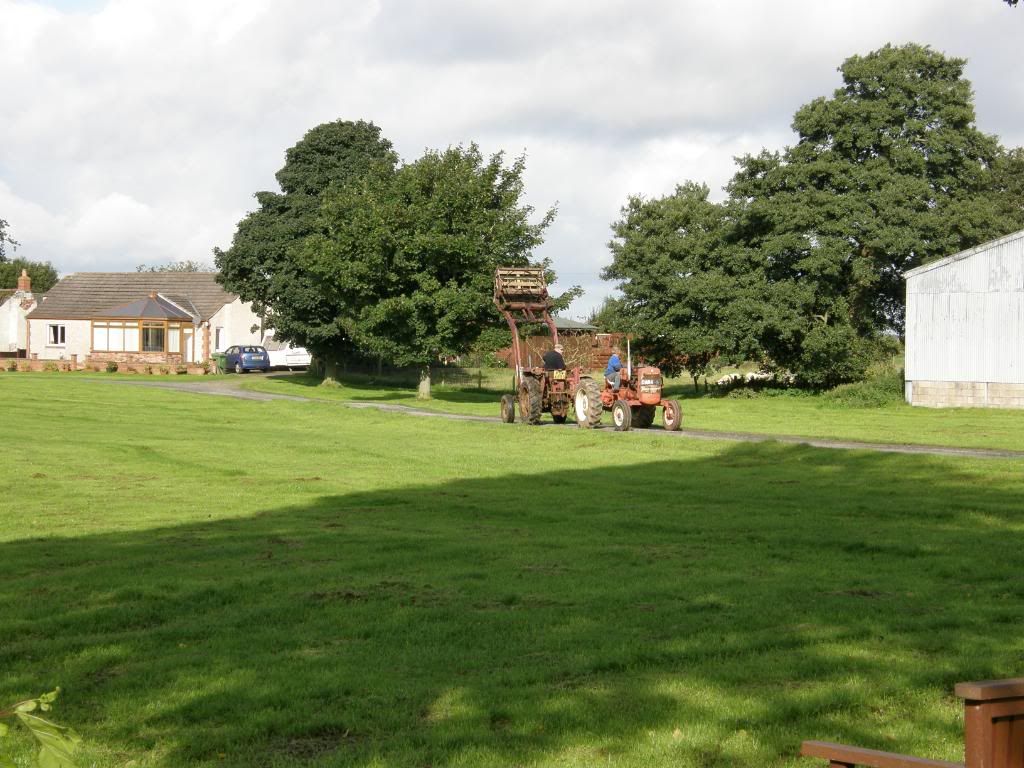
‘Jethro you pull and I’ll push’
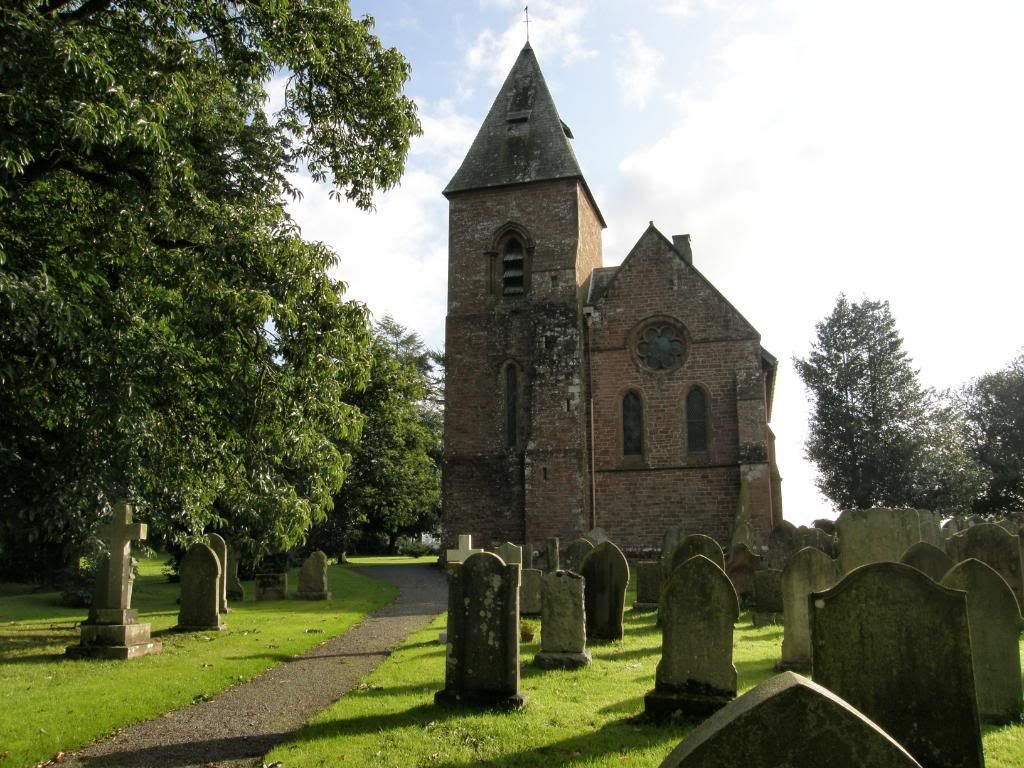
The church in Walton village
The Victorian church made up of old red sandstone blocks positively glowed in the morning light, and I smiled as I passed by the Centurion Inn to rejoin the Hadrian’s Wall route. The first mile or so was down a country lane, and then it was back to the cow pastures. On the map the turrets and milecastles started to appear but there wasn’t any sign of them on the ground, save for a few lumps and bumps. The vallum, various ditches and earthworks stay with you for the rest of the day, and remnants of the wall can be seen under hedges at the field edge, with the odd block having rolled out here and there. Before I approached the first steeper hill of the day, there was another self-service refreshment stop at Haytongate, a bit early in the day but I brewed a cuppa and had a Kit-Kat. The inside of the hut was plastered with notes written out by walkers of all ages, giving their thoughts on the refreshment stop and wall walk. There were some lovely lines to read, including one from a scout troop who apologised for being 50p short, and that the local farmer would make up the shortfall. The shed also included a wasp’s nest and a house martins nest – a great little place to stop and rest.
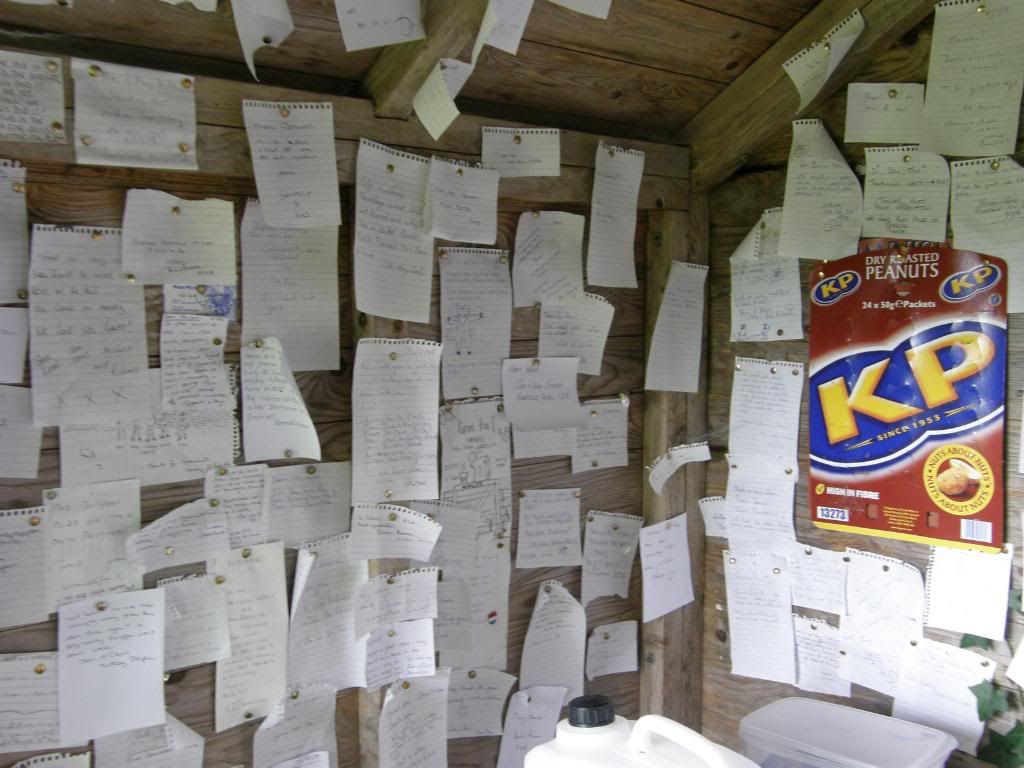
The first stop of many
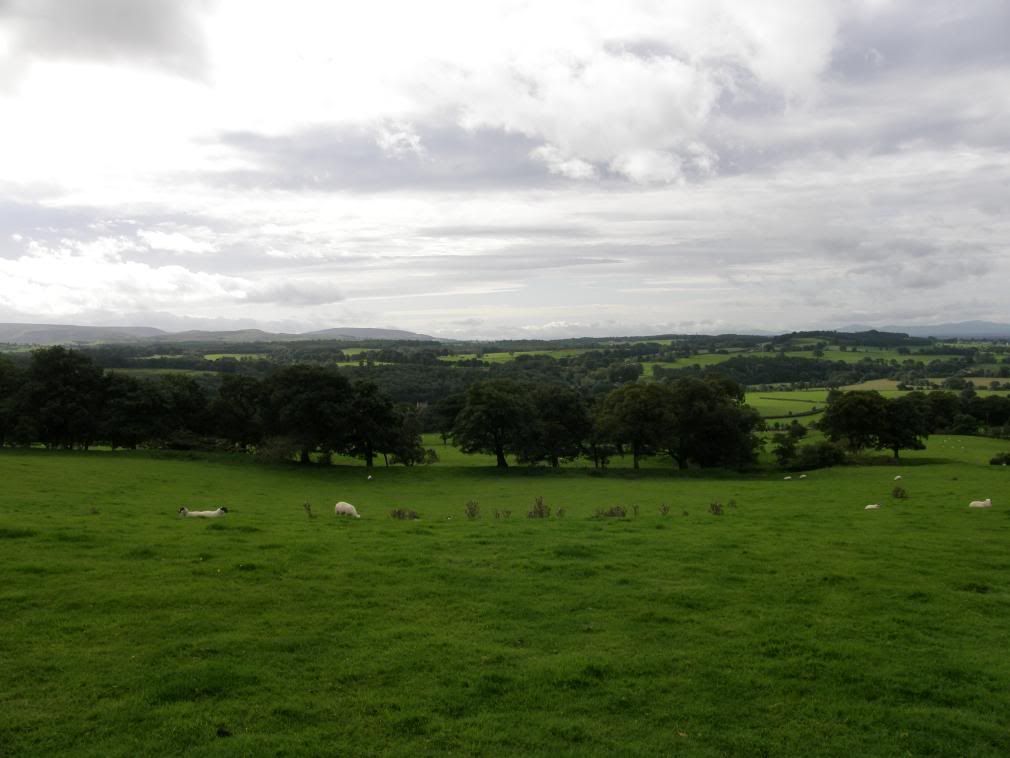
The view back to the Lake District
Then I wandered uphill at a slow pace to make sure I didn’t burn my fingers. At the top of Craggle Hill there were marvellous views all around, so I took an 180deg picture with the camera to capture the scene. I looked back to the west and could pick out Blencathra and Skiddaw in the lake district, and Cold Fell and Talkin Fell on the Pennines. The paths continued to be soggy but as the ground got higher and sheep grazing became more commonplace the going firmed up a little. It was a lovely peaceful stroll, until the village of Banks, and all of a sudden the pantomime season began…as in ‘it’s behind you..’. There was a loud rumble that was building to a crescendo, and all of a sudden out of the west, flying very low out of the valley was a RAF hercules. It looked like it barely managed to clear the tree line before veering around to the north. My pictures were just point and shoot, and in the blink of an ear it was gone – noisy buggers.
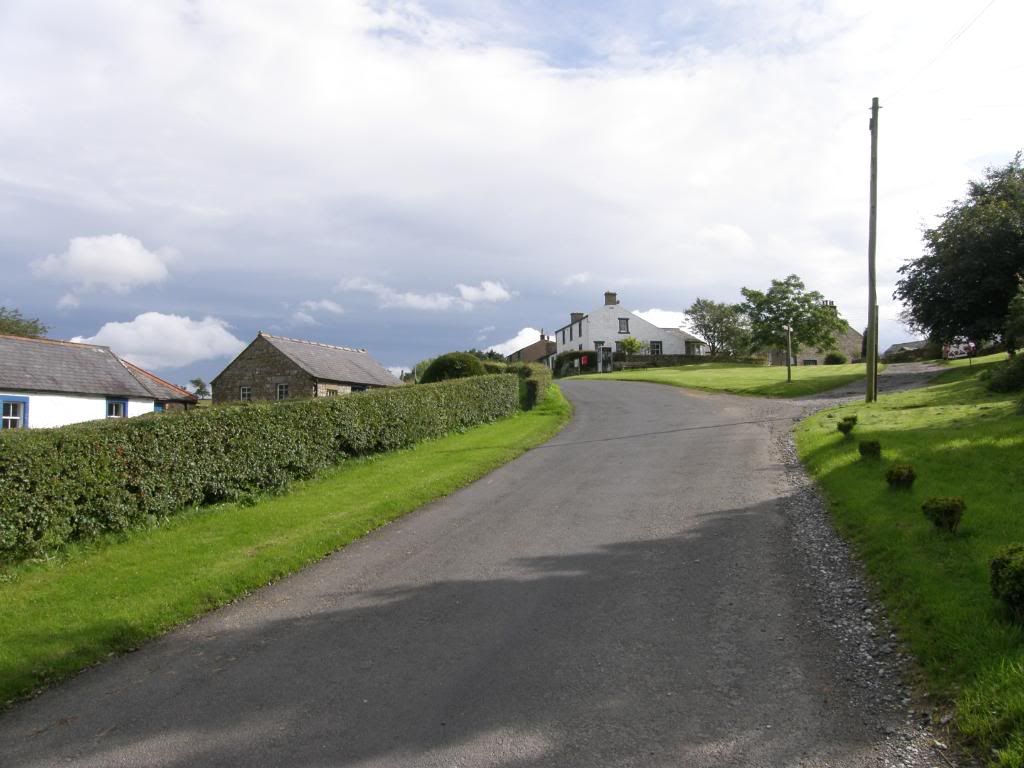
The village of Banks – but there isn’t one (a bank)
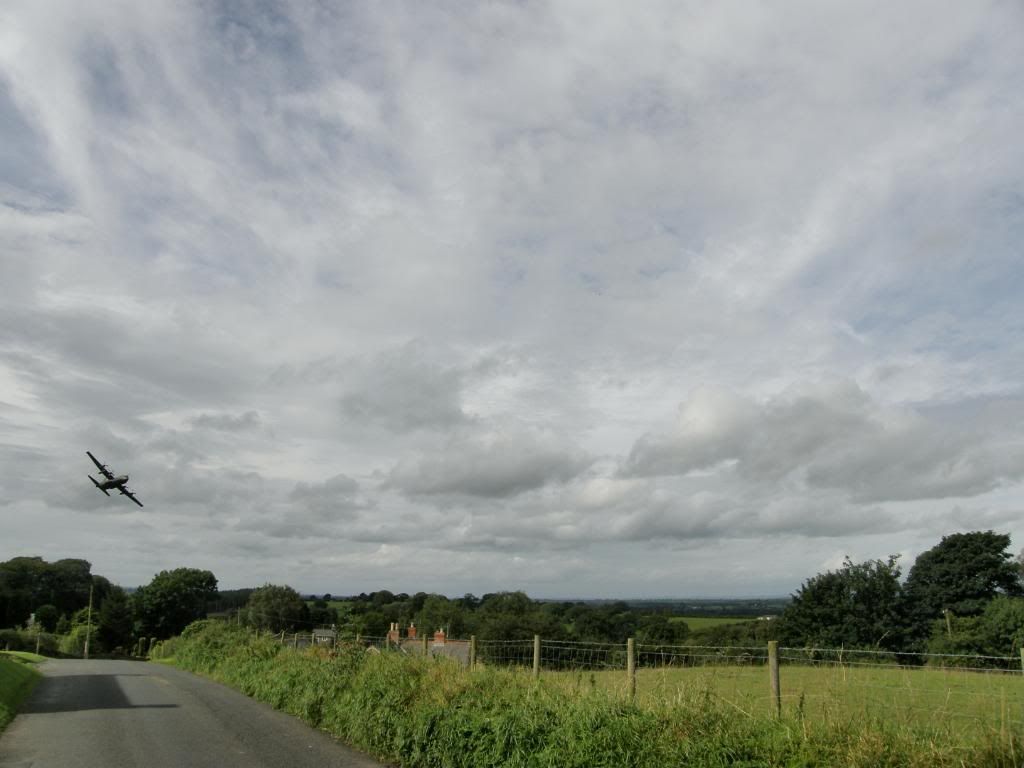
It’s behind you….duck…no it’s a Hercules
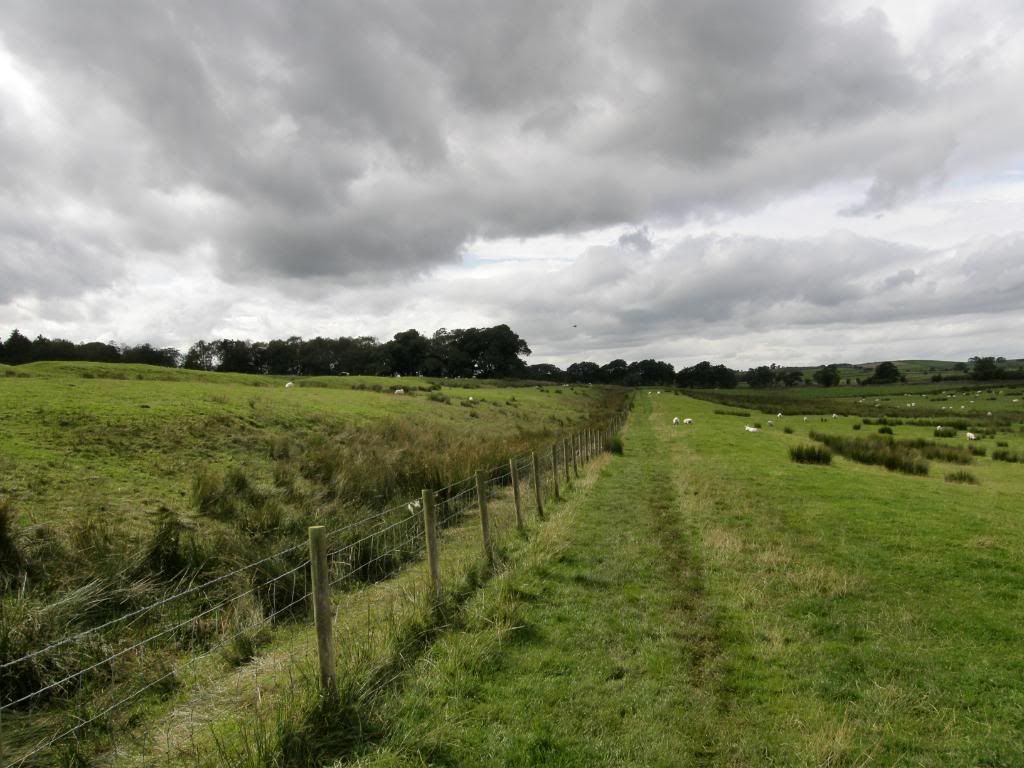
The ditches and vallum become more prominent
A mile or so further on from Banks is the signal station, presumably sited here because of the commanding views both north and south. It does look bleak to the north, even on a sunny day. From here to Birdoswald the land is gently rumpled and I ticked off the miles with the milecastles, some adorned with day trippers who have walked 50m from the car park. I met a steady stream of walkers coming the other way, which had presumably set off from Newcastle on the Sunday, but there weren’t many going west to east. As I approached Birdoswald the path climbs up on top of the wall for a short distance and it is covered with springy turf, a welcome change from the wet ground. The site of Birdoswald is a good mish-mash of building works from Roman times up to the 19th Century. Apparently the wall here was made up of turf and later on the fort was built around it. Later within the fort remains a Pele tower was built to keep the farmers safe, and then later a farm, and finally a fancy tower in the 19th Century. All of this gives you plenty to look at and digest. I viewed it from outside the walls as I didn’t want to stop at every Roman site along the way or I would have never got to Newcastle. A little further on I posed by some unique masonry that was producing much sniggering from the ladies present.
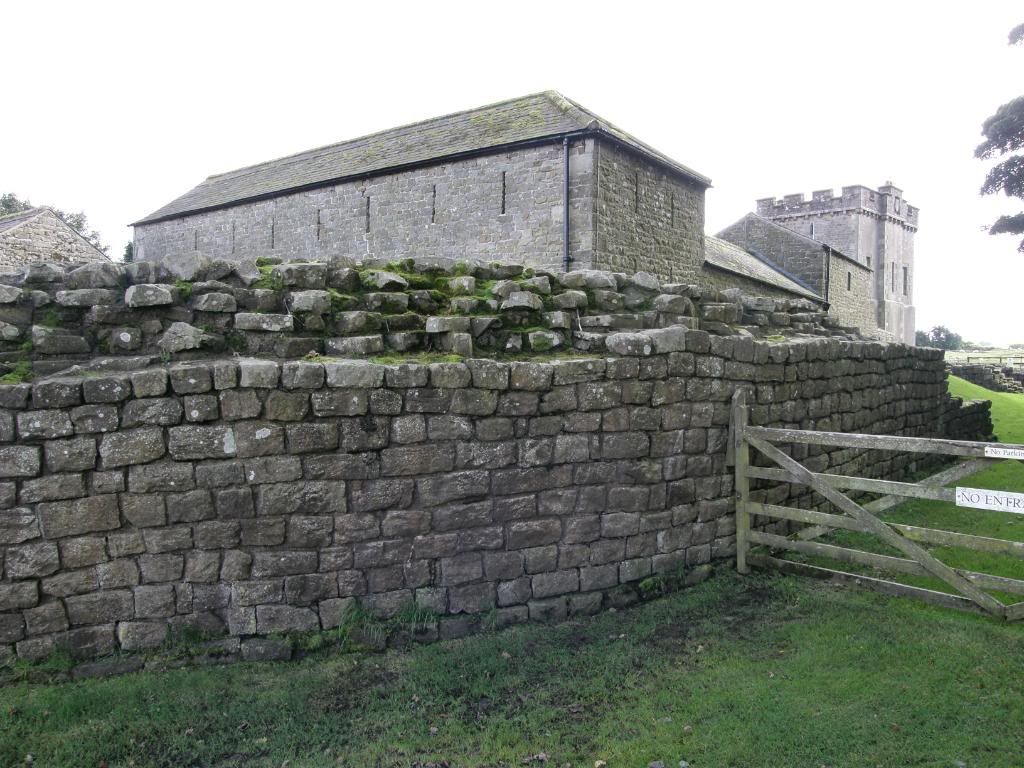
The Roman fort of Birdoswald
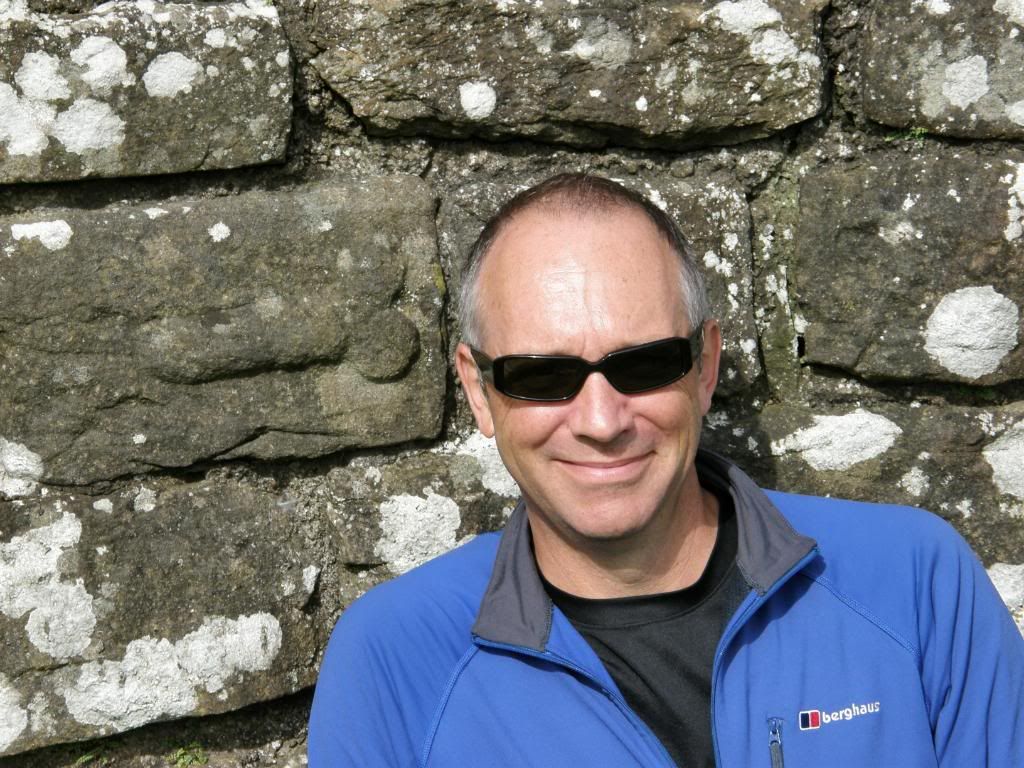
I’ve been called this a few times in my life!
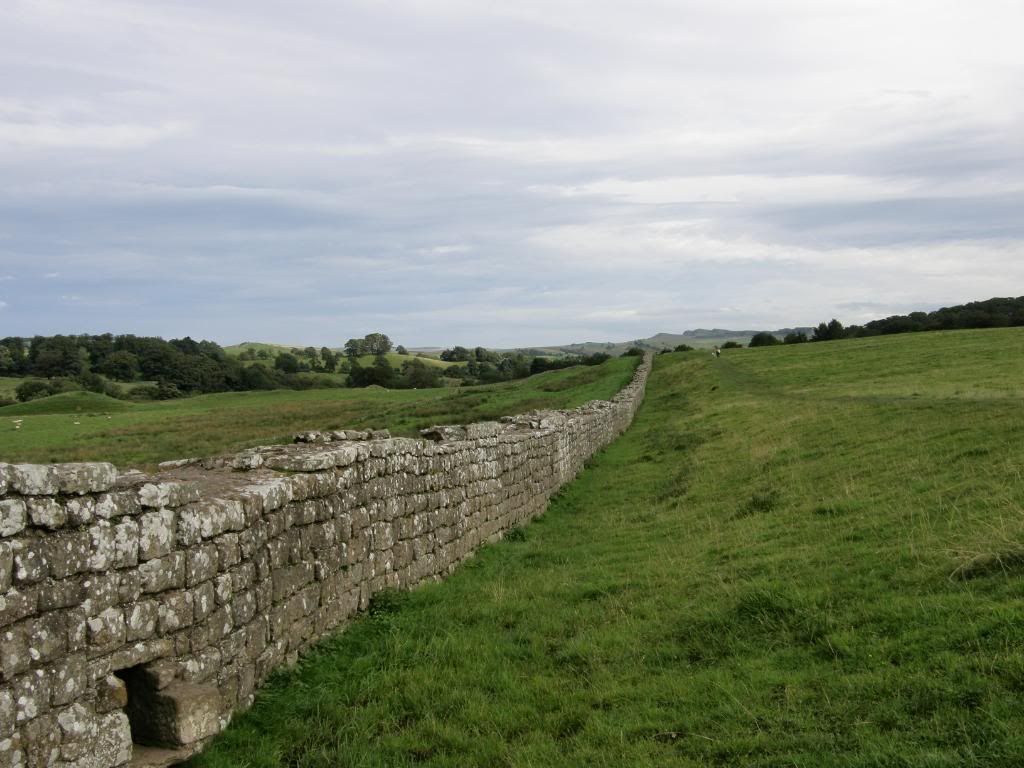
The view from Birdoswald to the east
A short distance on from the fort there is a steep drop down to the River Irthing valley and the Roman crossing at Willowford Bridge. This section of the walk was one of my favourites and you can appreciate just how good at building the Romans were. Some aerial views can be seen here: http://www.visitcumbria.com/car/birdosw.htm and here’s one of the bridge too http://www.visitcumbria.com/car/willow.htm . The course of the river has changed over the centuries past but you can still see the line of the wall that ran up the steep bank to link up with Birdoswald. The bridge itself has been rebuilt three times in its history, but the huge abutments can still be seen. You can see the slots that the masons cut to lift the massive blocks, and the later chiselled out squares that were used to hold the timber piers in place. A very atmospheric site combined with Birdoswald, and having walked up beside the wall from the valley, looking back along the wall line towards the river your eye is drawn up the far slope to the milecastle at the top – there appears to be a gap in the trees which would be where the remains of the wall continue up beyond the river. To top it all off is an inscribed block of sandstone saying that the Roman ‘Bob the Builder’ made this.
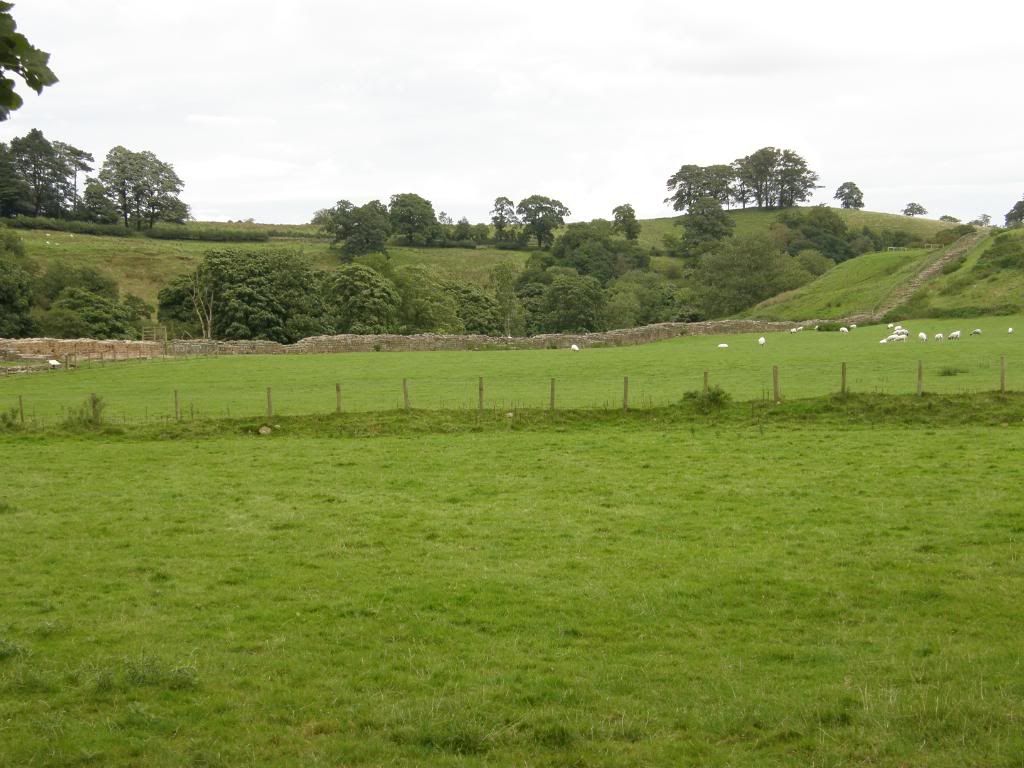
The bridge was at the left of picture
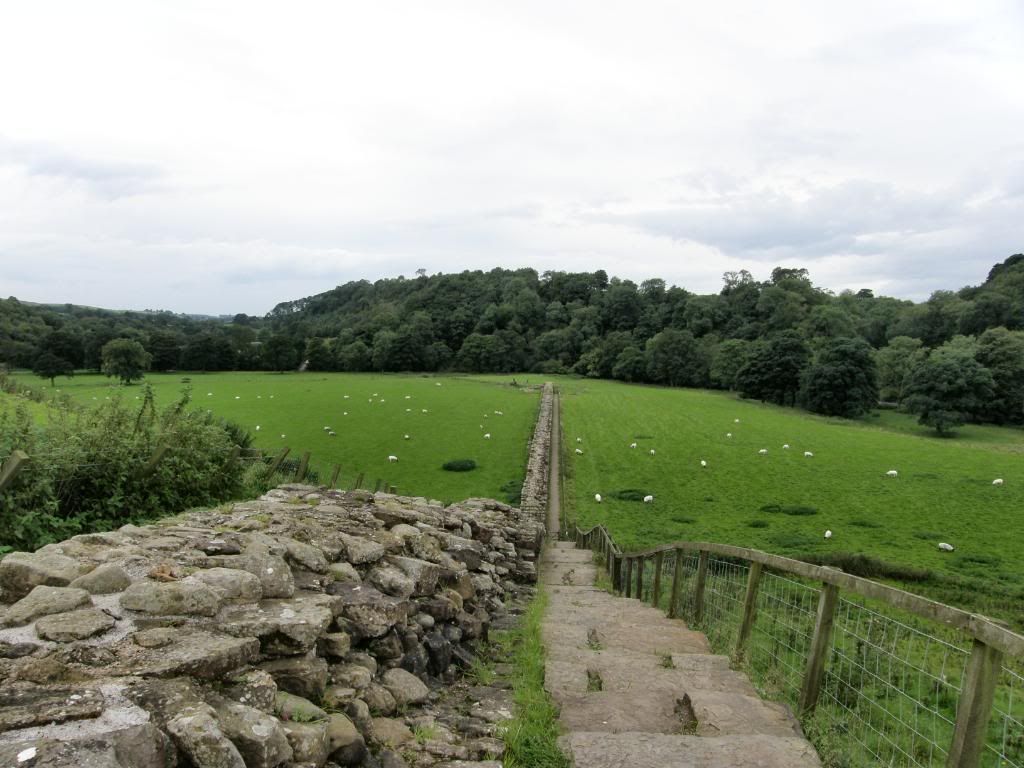
Note the treeline on the bank opposite the wall
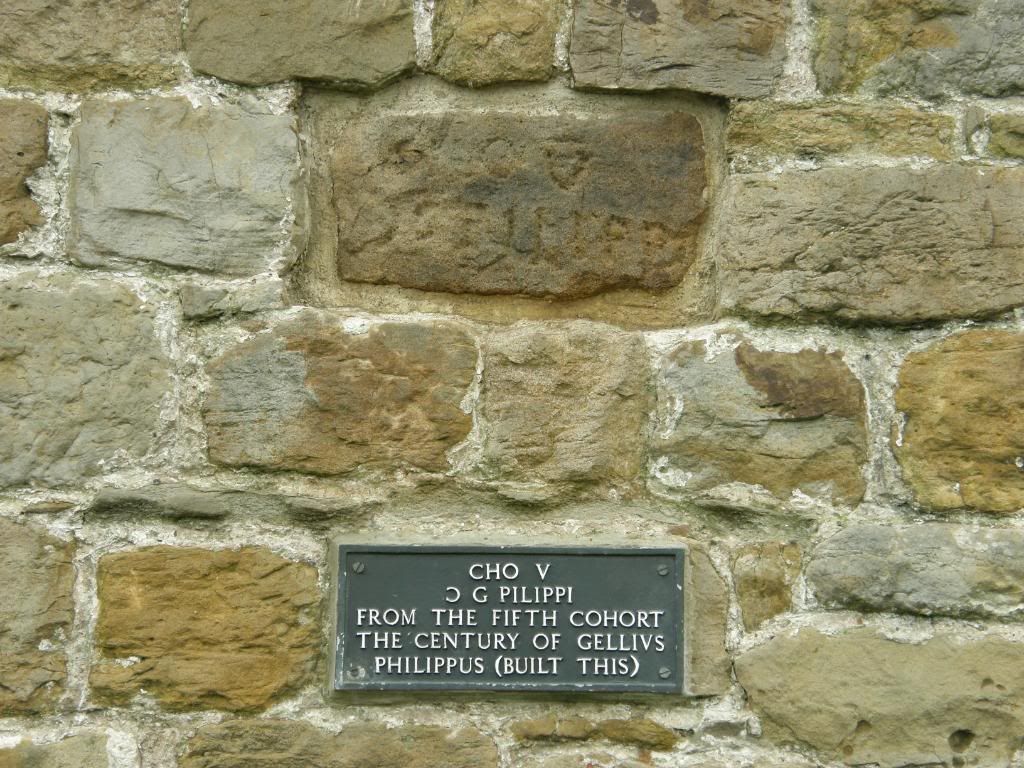
The Roman inscription built into a barn wall
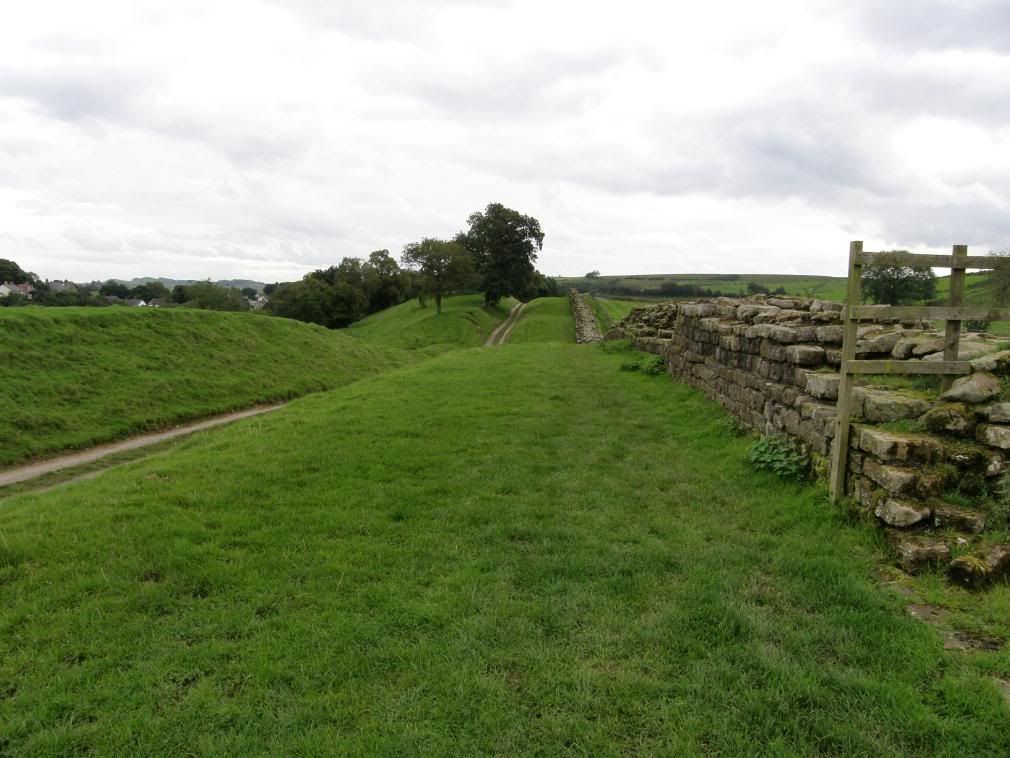
Impressive earthworks
All along the way there are a number of new bridges in place that have been funded by the national lottery, so I must have bought a few of the wooden slats that I walked across. Some people say that the lottery is a tax on the mathematically inept, and I always reply to them "does that make the jackpot winner a genius?" – you pay your money and take your chance. Once I was past the Willowford site it was a short walk on to Gilsland. There is an impressive milecastle 48A that is sited on sloping ground before you get there and I also crossed over the railway line, walking past a sad run down building whose grounds were full of geese and donkeys – what a mess. Gilsland used to be popular for taking the waters of the sulphurous springs Just north of the village is Gilsland Spa Hotel, much frequented in the summer, on account of its beautiful scenery, and the chalybeate and sulphur springs that issue from the rocks. Gilsland Spa Limited was established in 1901 as a convalescent home for Co-operative society members in the North of England. Next up on the long list of attractions for today was the aerial duel between a solitary hungry bat and those well known predators – the swallows. I was amazed to see the bat out and about in the early afternoon (15:30), and it was twisting and turning in rapid fashion as it munched its way through a few midges. I was even more amazed to then see four swallows diving and harassing the bat in the battle for lunch.
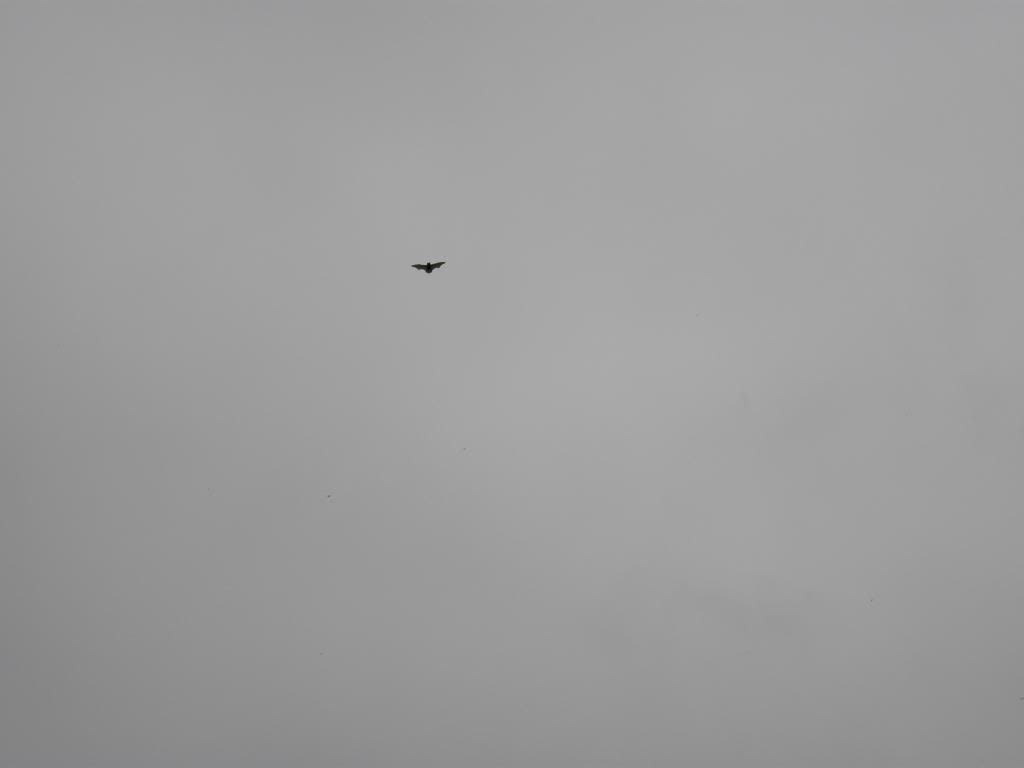
Dinner dinner dinner…Batman
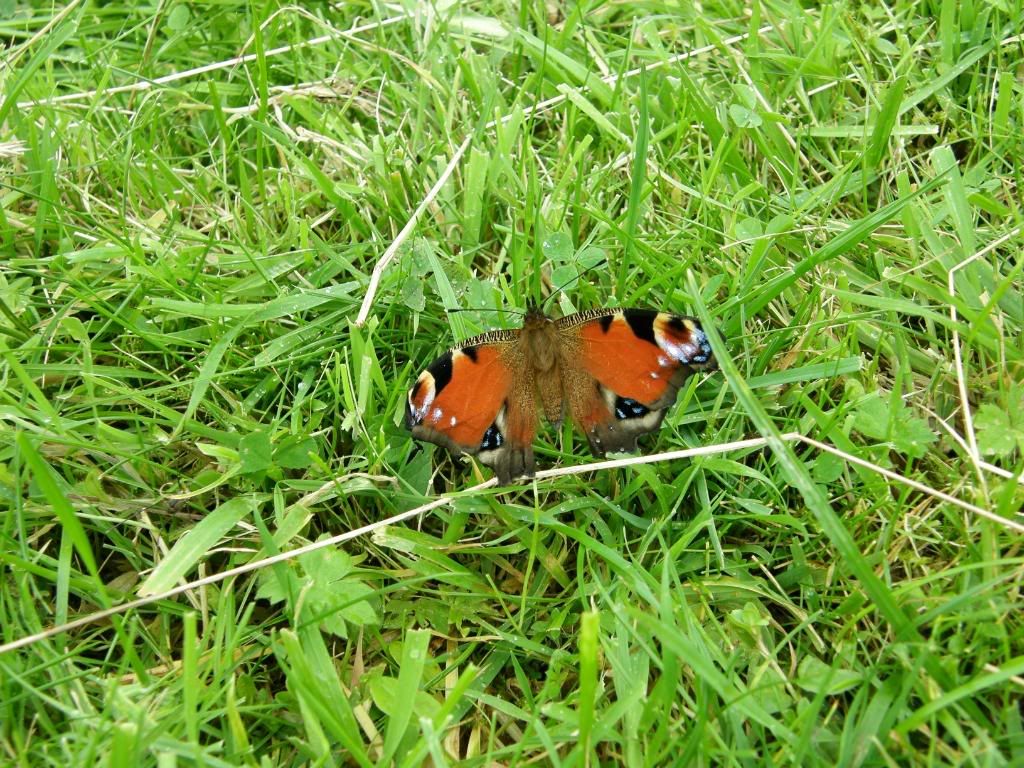
Beautiful plumage..
My camera managed to take a few pictures and you can see clearly the bat and the swallows (look in the flora and fauna section at the end). Although the pictures are not the best quality, I was quite pleased to get any as they weren’t exactly hanging around, particularly the bat (although he should have been). Within a few minutes I got a good shot of a tortoiseshell butterfly with lovely eye markings on its wings – more delay to my ramblings. The ditches and vallum here are well defined and you can see them stretch away into the distance in the usual straight line, impressively deep. The remains of Thirlmere castle stand proud on its grassy mound, and the first sight of the Whin Sill comes into view which forms the distinctive crags that the wall follows for a considerable distance. The route winds through a small hamlet behind the castle, over a stream and passes by a lovely wooden bench adorned with the national trail acorn. The ditch and vallum are impressively deep here and up towards the top of the hill the first real sight of the wall along the crags can be seen, and it is a taster for the rest of the day and the long walk tomorrow.
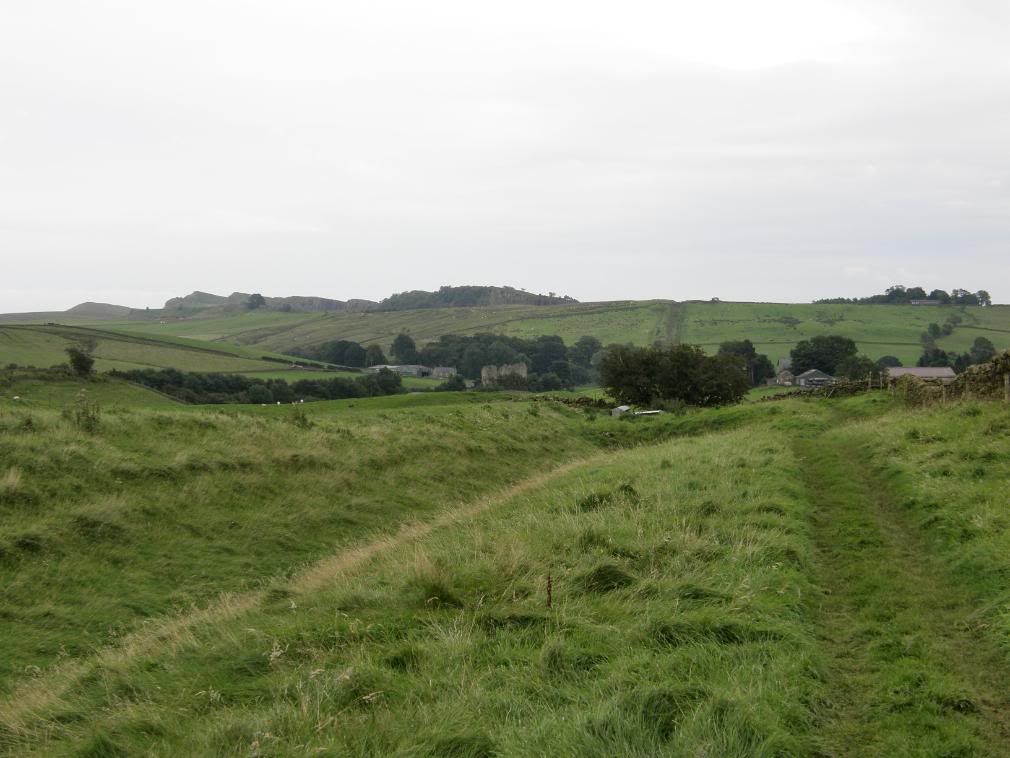
The vallum stretching away up the hill before and beyond Thirlmere castle
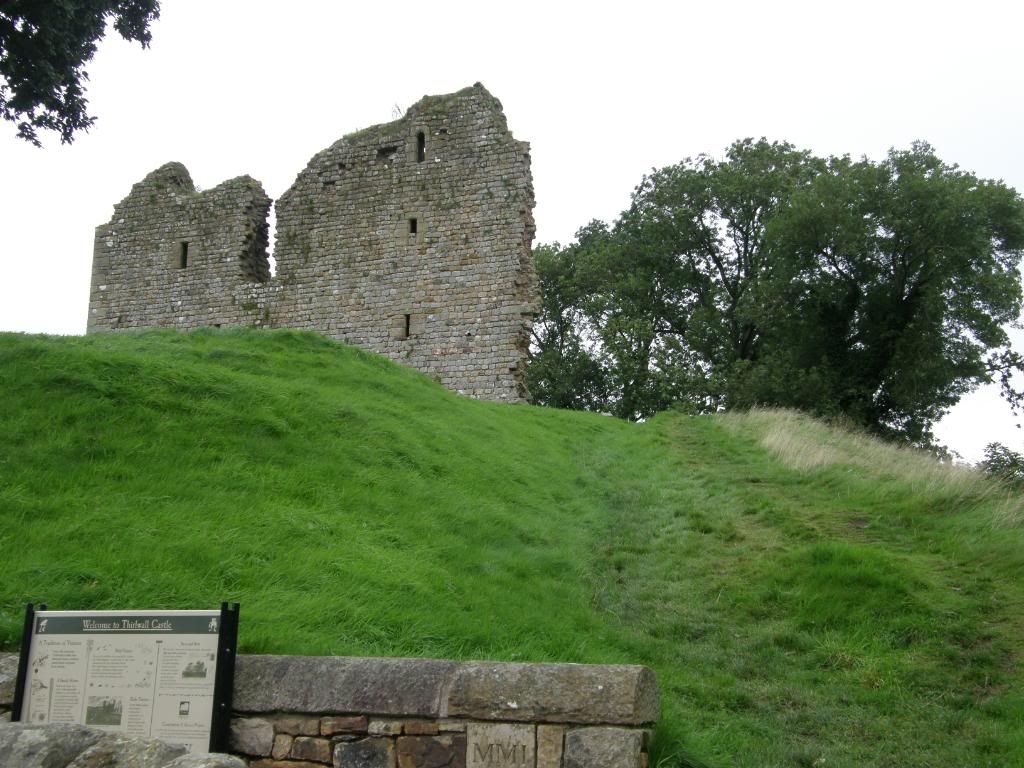
The castle remains…closed when I passed by
The old quarry at Walltown is being developed into a recreational area with lots of short walks radiating away from the car park, and it has a large quarry lake that is home to numerous wildfowl. It also has refreshments and I stood at the door of the freshly mopped floor and asked to be tangoed. The working quarry of the 1940’s munched away much more than the Romans ever did and took quite a portion of the wall as well before somebody stopped them. You can find out a little about it here:- http://www.northumberlandnationalpark.org.uk/walltown_5.pdf . I made my way around the quarry lake and up onto the crags and although it was a dull late afternoon the views were extensive and the atmosphere unique to these hills. It would be very bleak up here in the dead of winter with the wind howling and the rain lashing down. I would have thought that the centurions would have retired to the nearest cosy milecastle and shut up shop for the day. I suppose the marauding barbarians of the north would have thought twice about mounting a raid in that sort of weather.
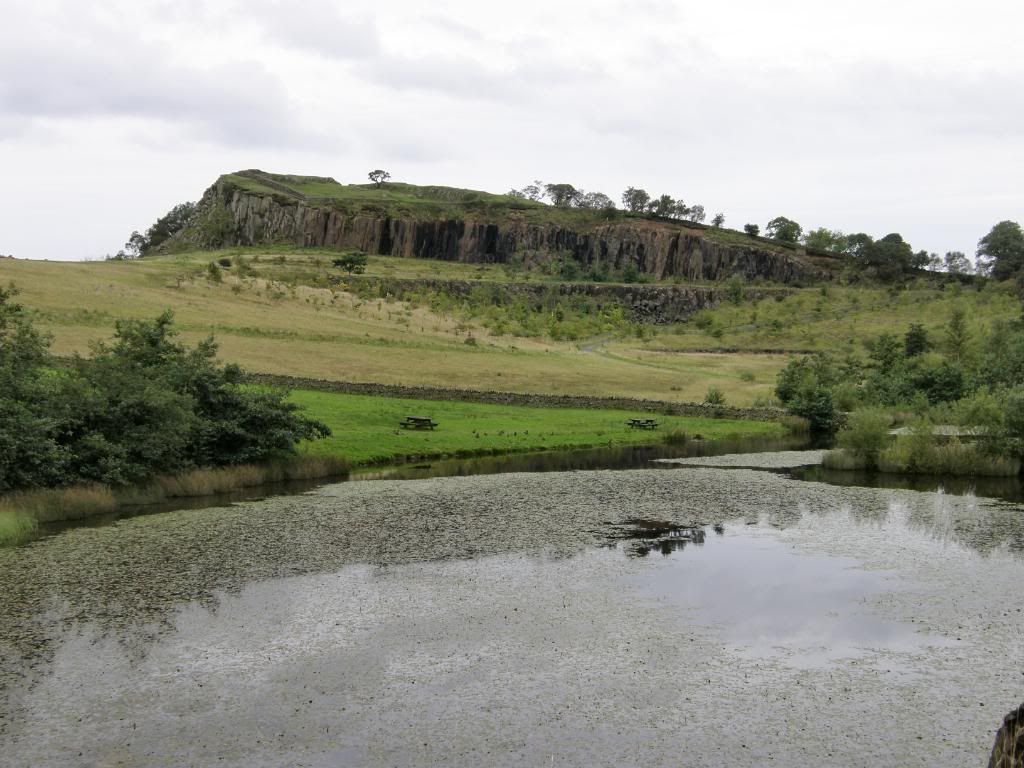
The quarry lake at Walltown
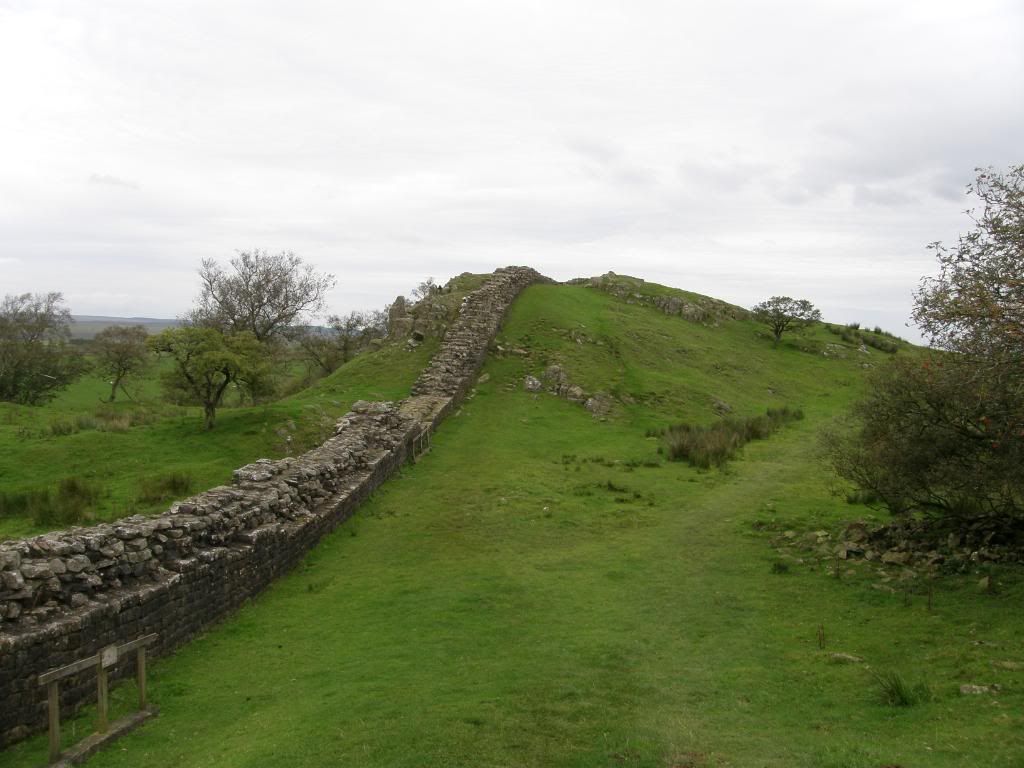
The wall runs up and over the crags as straight as it can
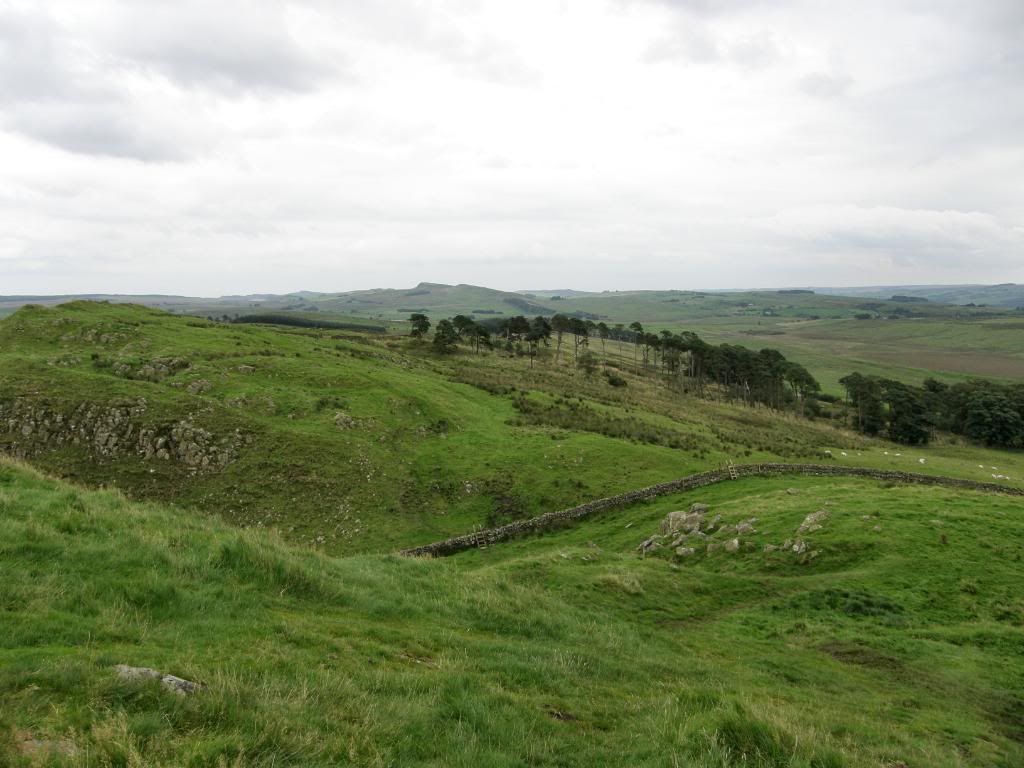
The crags stretch out in the distance
But the area around the wall must have been in use for a long period of time after the Romans disappeared as there are strong field markings of ridge and furrow all around. Some of them have been ploughed out, but you can still see the ancient patterns on the fields. The wall follows the edge of the crags closely and would have been a fine defensive position. I missed seeing one of the good turrets – 45A - as the path was diverted to the lower slope while repairs were carried out. I could have been reckless and followed the old path but that would have been purely selfish, but then again it was towards the end of a long day in which I had seen so much, and probably dawdled too often. Just before I reached the B&B at Burnhead the Aesica Roman fort came into view. It was mainly earthworks, but has an original altar stone to look at, and the ridge and furrow next to the fort was in its original state.
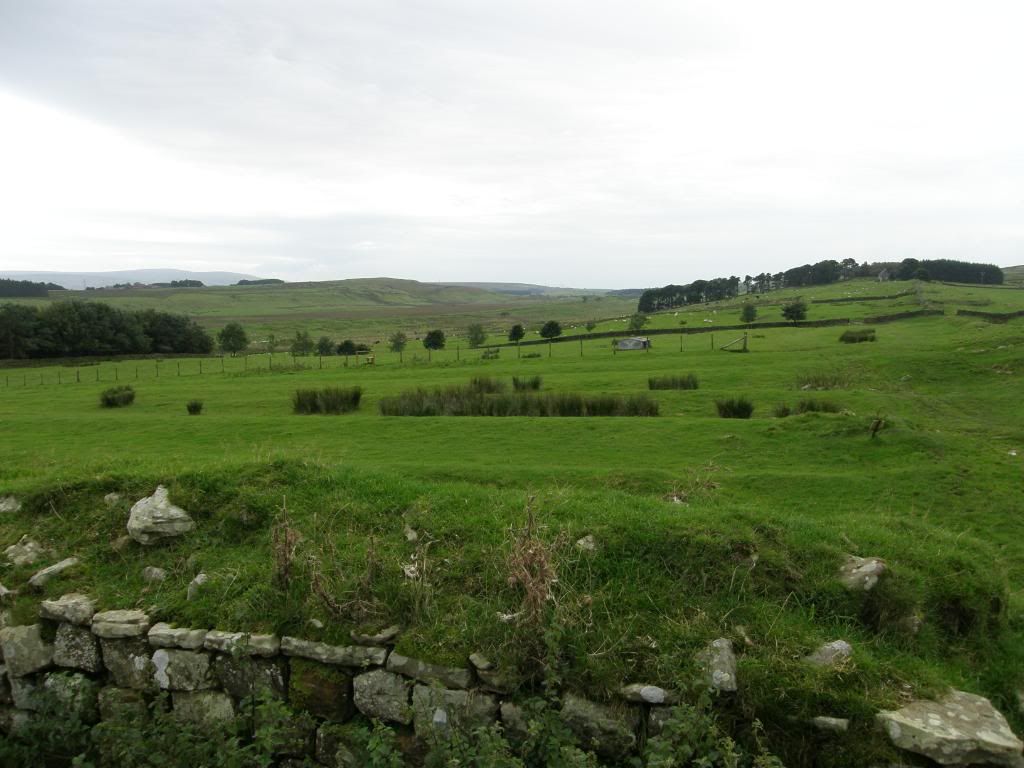
The ridge and furrow next to the fort
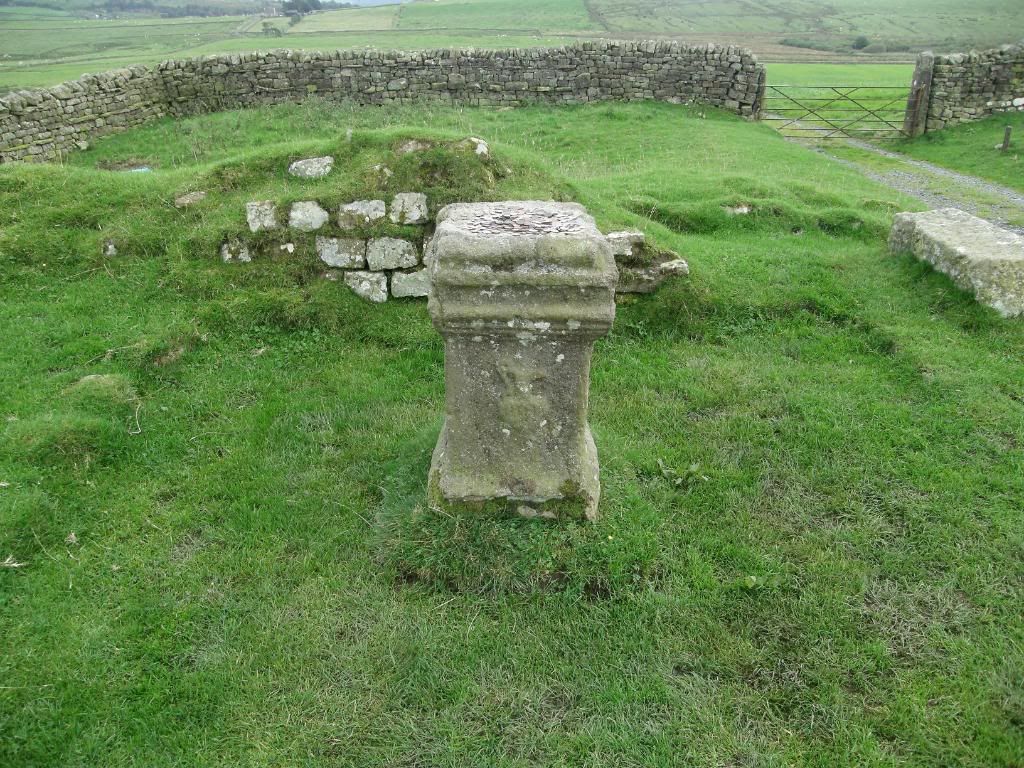
The original altar stone within the fort
The altar stone had a carved wine ewer carved on one side, and passing visitors had left their own offering of pennies to the deities. I left 2p and incanted a vision of a pint of Big Lamp Bitter to be served up soon. As I approached the Burnhead B&B I could see the landlord looking anxiously towards me, as if to say come on hurry up. He pointed out a stone step in the wall to save my legs and ushered me in with a very cheerful welcome. It was his birthday, so he disappeared off to the Milecastle Inn with his wife for a celebration. After a quick scrub up, I followed on in his footsteps, and lo and behold there was a wonderful pint of Big Lamp bitter………..aaaaaaaaaaaaagggggggghhhhhhhhhhhhhh. Burp.

No comments:
Post a Comment